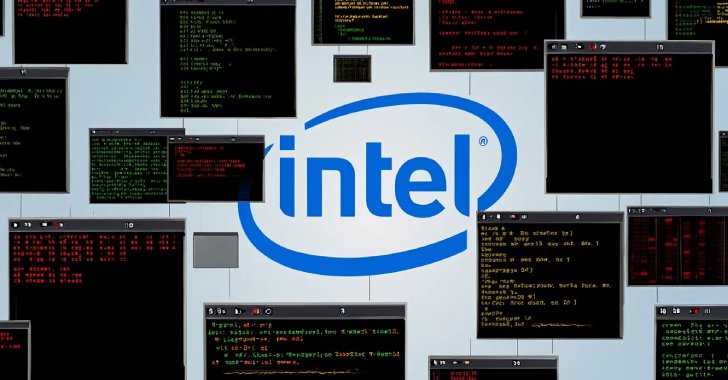Summary Points
-
New Intel Vulnerability: Researchers at ETH Zürich unveiled a security flaw named Branch Privilege Injection (BPI) affecting all modern Intel CPUs, enabling unauthorized access to sensitive data by exploiting CPU prediction calculations.
-
Mechanism of Attack: The vulnerability exploits Branch Predictor Race Conditions, allowing unprivileged hackers to bypass security barriers and access confidential information across different user permissions on the same CPU.
-
CVE Identifications: The vulnerability is assigned CVE-2024-45332 (CVSS v4 score: 5.7) and has prompted Intel to issue microcode patches to mitigate risks, along with additional vulnerabilities (CVE-2024-28956 and CVE-2025-24495) affecting various Intel processors.
- Resurgence of Spectre Attacks: Complementary findings from Vrije Universiteit Amsterdam on Spectre v2 attacks illustrate potential impacts on kernel memory and domain isolation, raising significant concerns about data security across Intel’s architecture.
Problem Explained
On May 16, 2025, Ravie Lakshmanan reported a significant security vulnerability discovered by researchers at ETH Zürich, known as Branch Privilege Injection (BPI), which impacts all modern Intel CPUs. This flaw allows unauthorized access to sensitive information from the processor’s cache by exploiting the predictions made during CPU calculation processes. Despite being a residual threat from the infamous Spectre vulnerability first identified over seven years ago, BPI specifically capitalizes on the Branch Predictor Race Conditions (BPRC), enabling unprivileged actors to bypass security measures and access confidential data from processes with elevated permissions.
Kaveh Razavi, the head of ETH Zürich’s Computer Security Group, highlighted the pervasive nature of this vulnerability across various Intel processors, underscoring the potential for exploitation in shared computing environments. In response, Intel has implemented microcode patches and issued advisories to help mitigate the risks associated with this vulnerability, which has been categorized under the CVE identifier CVE-2024-45332. Concurrently, researchers from Vrije Universiteit Amsterdam reported on additional attacks that leverage similar Spectre v2 mechanics, revealing a broader spectrum of security concerns that continue to challenge computer architecture integrity.
Critical Concerns
The recently disclosed vulnerabilities affecting modern Intel CPUs, particularly the Branch Privilege Injection (BPI) flaw, underscore a significant threat landscape not just for Intel’s direct users, but for a wide array of businesses, organizations, and individual users relying on shared computing environments. This exposure to data leakage—where unauthorized actors can potentially siphon sensitive information across privilege boundaries—poses a material risk by eroding trust in the security frameworks that underpin myriad operations. Such vulnerabilities leverage the intricate architecture of processors, revealing how interconnected systems can inadvertently share critical data, thereby magnifying the danger as attackers could exploit these weaknesses across multiple entities operating on the same hardware. Consequently, if businesses fail to address these vulnerabilities effectively, they risk severe repercussions, including compromised sensitive information, reputational damage, and potential regulatory consequences, thereby unleashing a cascade of adverse effects within the broader digital ecosystem.
Possible Actions
The discovery of new vulnerabilities in Intel CPUs—particularly those that facilitate memory leaks and Spectre v2 attacks—illuminates an urgent need for timely remediation strategies in order to mitigate risks concerning data security and system integrity. In an era where cyber threats proliferate with alarming rapidity, the implications of unaddressed vulnerabilities are profound, jeopardizing not only organizational assets but also consumer trust and compliance with regulatory standards.
To effectively address these risks, organizations should undertake several substantive steps: First, they must prioritize a comprehensive assessment of their current systems to identify affected hardware and software components. This involves not just a surface analysis, but also a deep dive into proprietary applications and data flows that may be susceptible. Second, implementing robust patch management protocols is essential; organizations should ensure that all relevant firmware and OS updates are applied promptly, as these patches often contain critical fixes aimed at mitigating known vulnerabilities. Third, investing in ongoing employee training regarding security best practices can foster a culture of vigilance, empowering staff to recognize potential threats and respond appropriately. Finally, organizations should establish an incident response plan that includes specific measures to detect and respond to exploitation attempts, thereby reducing the impact of any successful breaches.
In alignment with the National Institute of Standards and Technology Cybersecurity Framework (NIST CSF), organizations are encouraged to adopt a risk management approach that emphasizes continuous monitoring and assessment of their security posture. Specifically, this scenario steals attention to the NIST Special Publication 800-53, which provides a comprehensive catalog of security and privacy controls for federal information systems and organizations. By referring to this document, entities can acquire nuanced guidance on implementing layered defenses, addressing vulnerabilities, and conducting regular risk assessments to stay abreast of emerging threats. In this fluid landscape of cybersecurity, timely remediation is not merely advisable; it is imperative for safeguarding the foundational pillars of our digital infrastructure.
Advance Your Cyber Knowledge
Stay informed on the latest Threat Intelligence and Cyberattacks.
Understand foundational security frameworks via NIST CSF on Wikipedia.
Disclaimer: The information provided may not always be accurate or up to date. Please do your own research, as the cybersecurity landscape evolves rapidly. Intended for secondary references purposes only.
Cyberattacks-V1

